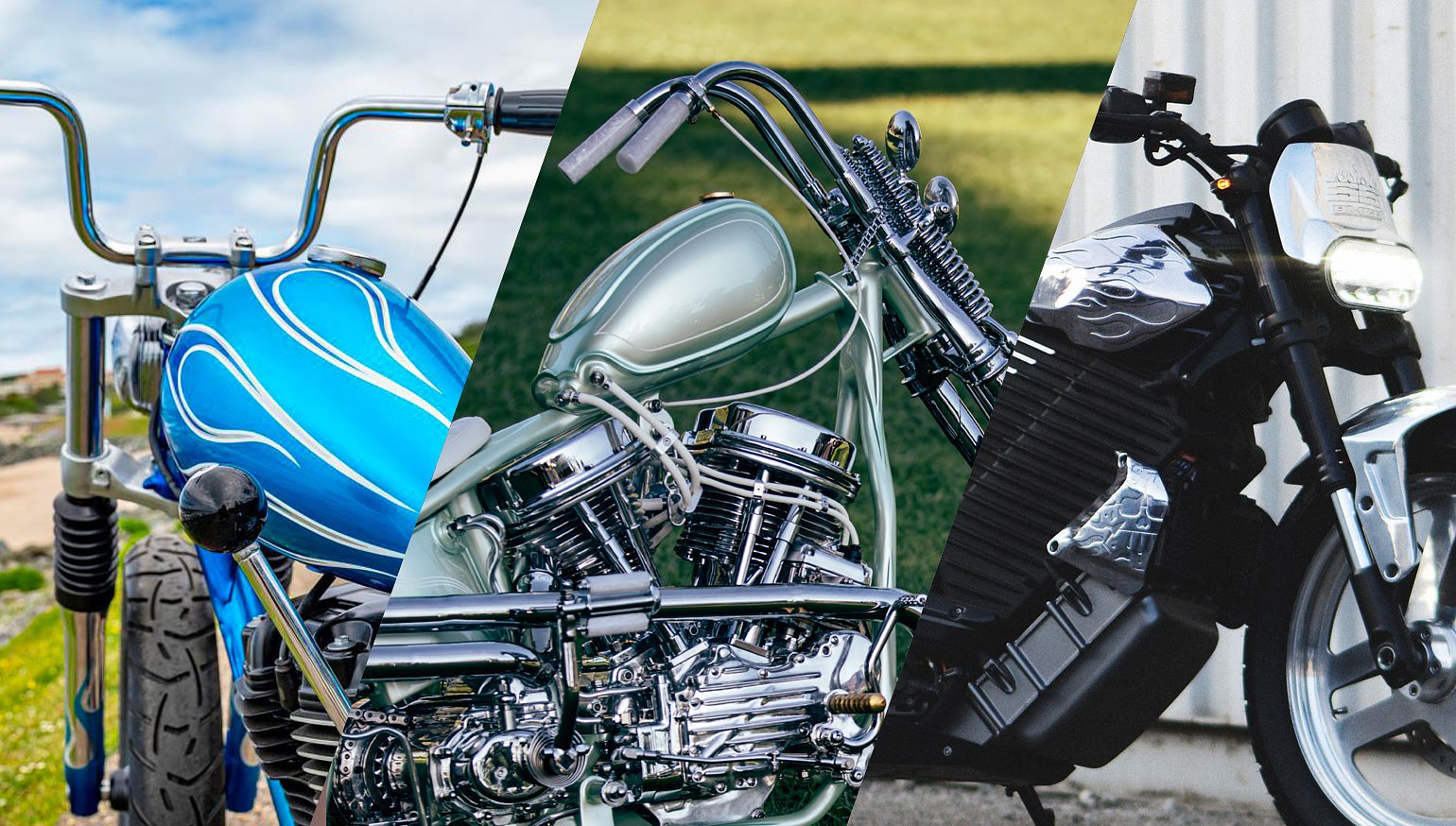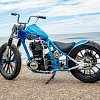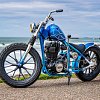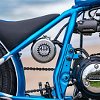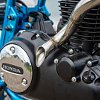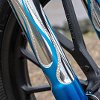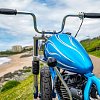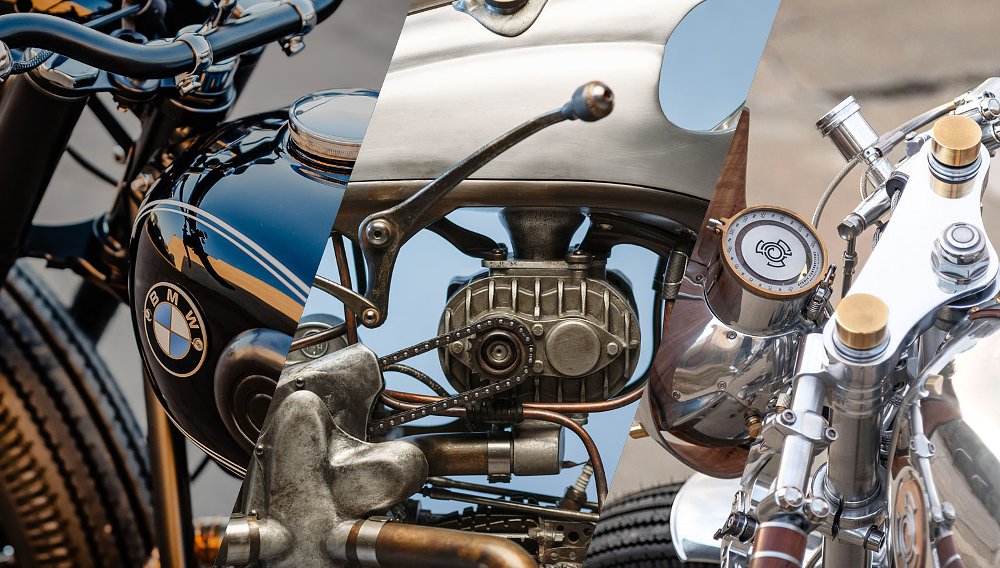To promote the European roll-out of its latest modern retro, the GB350S, Honda has invited workshops to modify them. In this edition of the roundup, we'll look at one such bike that turned heads at the Wheels & Waves festival. We've then got an impressive Born-Free Panhead chopper built by a 17-year-old, and closing out this edition of the roundup is a custom LiveWire S2 EV by California's Guardado brothers.

Honda GB350S Hachimaan by Motocicli Audaci
This back-to-basics bobber was one of 11 custom builds based on the Honda GB350S showcased at the 2025 Wheels and Waves festival in Biarritz, France. It's the work of the Sardinian builder Nicola Manca and his Motocicli Audaci (MAAN) workshop (Instagram). No stranger to modifying motorcycles from the Japanese marque, he pulled out all the stops to create this, the "Hachimaan" GB350S bobber.

Nicola built the Hachimaan to compete in the 6th Honda Customs build-off, an event that he's already won in the past. This time around, Nicola looked to both Japanese and California custom culture for his inspiration. With its upright engine, he seized the opportunity to convert the little thumper into a bobber, similar to pre-unit Triumph-engined bobbers of the 1970s and Yamaha SR400 builds in Japan.

"We thought that, although the GB was perfectly suited to making a café racer or brat with very little modification, a hard tail and minimal superstructure was the way to go," says Nicola. "This way, the engine would stand out much more as the most important part of the bike, while still respecting the work done by Honda."
Taking around 250 hours to complete, the defining feature of this GB350S is its custom-built hardtail frame. Of the original frame, only the lower cradle and part of the central tube remain, making it an almost entirely new design. The radical transformations didn't stop there, though. Aside from the engine, fork, and wheels, everything on this bike is bespoke.

In keeping with Nicola's concept, this GB is running a peanut fuel tank, mini-ape handlebar, a solo seat, and bobbed rear fender. To achieve the right stance, the fork was dropped by 50 millimeters. The heavily simplified electrics reside in a faux oil tank beneath the seat. And the handlebar features little more than grips and a throttle cable made possible by a suicide shift conversion. This translates to no front brake, a foot-actuated clutch, and shifting gears via a gear lever. The resulting riding experience isn't for the faint-hearted, but Nicola took a style-over-substance approach with his competition entry to ensure it stood out from the crowd.

The GB's paintwork is another eye-catching touch. Taking cues from the 1950s California hot rod scene, the blue-on-blue flame job is unapologetically cool. Nicola's friend, Willy, from Motoart, is credited for the work, which, along with the eight-ball shifter knob, is the icing on this two-wheeled cake.

Mickey Rat's 1948 Harley-Davidson Panhead
Since its humble beginnings in 2009, Mike Davis and Grant Peterson's Born-Free Motorcycle Show has grown to become one of the world's biggest custom motorcycle culture events. Each year, Born-Free invites a limited number of builders to display a motorcycle built especially for the show. Places are limited to around 30 entrants, so making the cut is both an honor and a huge responsibility.
This year's invited builders list featured many big names in the custom scene, but it's the lesser-known builders that draw my attention. This year, one such builder was Michael McElwee, otherwise known as Mickey Rat. At only 17 years old, he was the youngest invited builder at Born-Free 16, but his 1948 Harley-Davidson Panhead looked like the work of a seasoned pro.

Mickey lives with his Dad in Ocean City, New Jersey. When he's not at school or work, the senior high school student spends his spare time like many teens his age, surfing and skating, but with the obvious addition of building motorcycles. His interest in motorcycles came from his Dad, who has been building motorcycles for events like Born-Free and The Race of Gentlemen for as long as he can remember. His dad's automotive obsession had begun to rub off on him at about the age of 11, and Mickey was chafing at the bit to build a bike of his own.

"I found the frame in the attic of our barn, where my dad kept his parts. I took it down and asked him if I could wrench on it. I began collecting parts, and Dad would help me find things at swap meets. Then just as we got to mock-up stage, we moved to the beach, didn't have a barn, and it all went into storage," Mickey recalls. "This year, I asked if I could continue the build, and he said he'd get back to me. Soon after, he asked me if I wanted to do Born-Free. I didn't think he was serious, but I obviously said yes. It turned out there was an open spot and I was lucky enough to be offered it."

Mickey's goal for his entry into the show was to create a clean, 1960s-style show bike with the Panhead frame he'd found in the attic six years prior. Using his Dad's workshop and well stocked tool collection, he dedicated one day a week and any spare time between school and his job to getting it built.
Impressively, Mickey completed the vast majority of the custom fabrication work on this Panhead himself. Things he made include a plethora of spacers, levers, and brackets, the foot controls, hard oil lines, and the entire exhaust. Although the fenders and fuel tank were sourced from Lowbrow Customs, he added all the rib work himself. During the build, he also converted the engine intake to run a dual-carb setup and fitted a Phares Cycle Parts Springer front end and a Vard rear drum brake.

They say it takes a village to raise a child, or in this case, build a Panhead. So to help get the bike done in time for the show, Mickey called on some experts to lend a hand. Tomb Ace at Darkside breathed new life into the Panhead V-twin, which is now running Truett & Osborn flywheels, an S&S oil pump, L1 cam, KB forged pistons, Kibblewhite valves, and a Morris magneto. Steve from East Coast Machine wired it up, and finishing touches like the custom seat were handled by Butt Seats in British Columbia. The flawless mint/seafoam paint and 1960s pinstriping were laid by Travis Hess, aka Tuki, in West Virginia.

Unsurprisingly, Mickey came away from Born-Free 16 with a Founder Pick award, and rightly so. Mike and Grant know a good thing when they see it, and acknowledging young talent like Mickey helps foster a good future for the custom scene. This Panhead is the first complete motorcycle Mickey's put together, and I for one can't wait to see what he comes up with next.

SMCO x Livewire S2 Del Mar
Brothers Shaun and Aaron Guardado are the driving force behind the Long Beach, California–based workshop, Suicide Machine Company (Instagram). With roots firmly planted in flat-track racing, SMCO's custom creations typically feature styling inspired by the motorcycles they race. The Guardados have a long-standing relationship with manufacturer Harley-Davidson through their racing and custom bike-building exploits. However, for their latest project, it's H-D's spin-off EV company, LiveWire (Instagram), that tasked them with modifying one of its machines.

The S2 Del Mar is the highly anticipated second model released under the LiveWire badge. The 85-horsepower, all-electric motorcycle boasts a 0-to–60 time of just three seconds, which is impressive by roadster standards. As for the look, the flat-track-styled S2 is right up SMCO's alley, which is exactly why LiveWire worked with the Guardado brothers to help promote its release.
After being involved in the launch of the S2 Del Mar, Aaron and Shaun knew they had to get their hands on one. Of the 100 S2 Del Mar Launch Edition motorcycles released, SMCO secured numbers 66 and 46 to match the brothers' corresponding race numbers. Number 66, Shaun's bike, was then flagged for customization in a style that Aaron describes as "channeling the attitude and spirit of vintage dirt trackers through the lens of a fully modern electric motorcycle."

Using his skills in 3D modelling, Shaun created digital renders of the parts they made for this project. This enabled him to develop each component accurately and to scale, and also gave him a strong sense of how the finished bike would look. "Modern-day design and fabrication is not only building something with raw materials, cutting, trimming, welding, etc. Now, there is so much more to it. Some of which require CNC machine work, or making molds to replicate production parts, etc. The start of some of this comes with the 3D design work," explains Aaron.

After modelling the parts, they were rapid-prototyped using 3D printing technology. Once satisfied with how everything looked, the parts were formed from aluminum using traditional metal-shaping techniques. The list of alloy additions includes a new fuel tank cover and tail unit assembly with embossed livery, a redesigned front fender, heat exchanger covers, and a headlight race plate fairing. Along with the new bodywork, the bike runs 19-inch front and 18-inch rear Performance Machine Chicane wheels and a bespoke vintage-style seat upholstered by SMCO's friends at Saddlemen.
Complementing the new bodywork is a selection of handpicked aftermarket parts from SMCO's preferred suppliers. These include Dunlop DT3 and K180 tires, a Galfer rear brake rotor, lighting upgrades from Denali, and CRG Arrow bar-end mirrors. Finally, to add a splash of color, the brothers powdercoated the factory Showa monoshock in red.

It goes without saying, this bike was not built with the intention of racing it on a flat track, but you can be sure that Shaun pushes it to its full potential.




